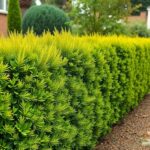If you’re tired of watching deer munch their way through your garden, you’re not alone. Fortunately, there are plenty of ways to create a beautiful landscape that stays safe from these grazing visitors. Here are 13 deer-resistant landscaping ideas to help you keep your garden thriving while embracing nature in a more harmonious way.
Spiky and Thorny Plants for Protection
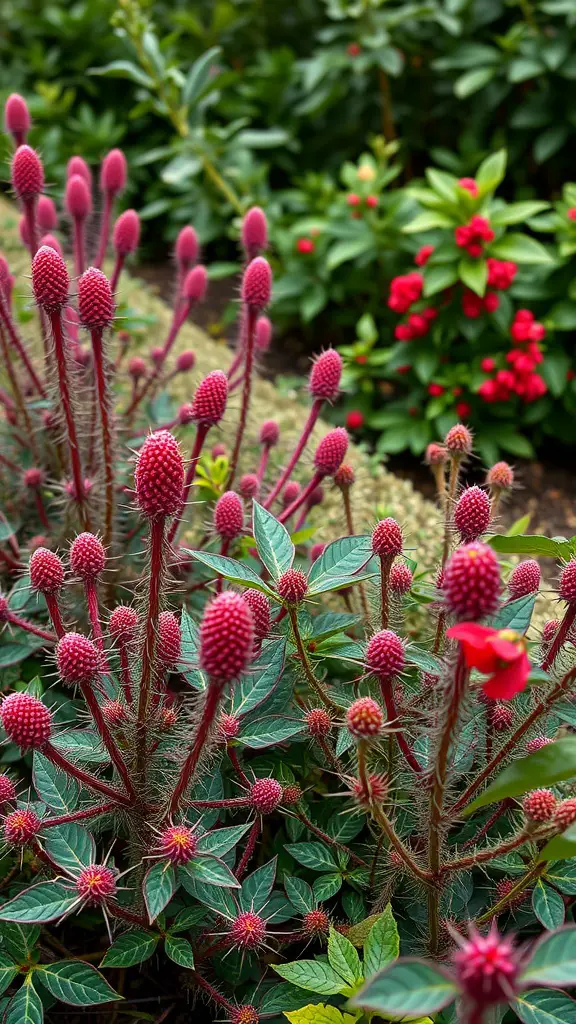
When it comes to landscaping that keeps deer away, spiky and thorny plants are your allies. These plants not only add texture and visual interest to your garden but also serve as a natural barrier. In the image, you can see vibrant, spiky plants that are effective in deterring deer. Their sharp features make them less appealing to hungry deer looking for a snack.
Incorporating these types of plants into your garden design can be a smart choice. They can define borders or fill in spaces where other plants might struggle. Plus, the unique shapes and colors can create an eye-catching display. Plants like barberry or holly are excellent options, combining beauty with practicality.
Another benefit of spiky plants is that they often require less maintenance than traditional garden plants. Once established, they can thrive in various conditions, making them a practical addition to your landscaping. Just be sure to place them strategically, so they not only protect your garden but also enhance its overall look.
Ground Covers that Resist Browsing
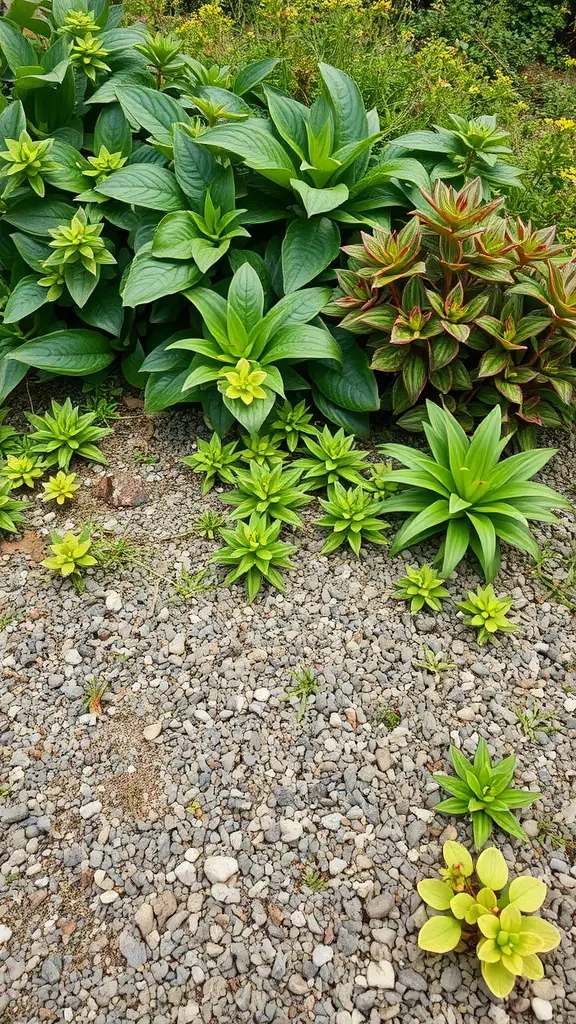
When planning a deer-resistant garden, choosing the right ground covers is essential. The image shows a vibrant assortment of lush green plants, showcasing various textures and colors. These plants not only add visual interest but are also great options to keep deer at bay.
Ground covers like these can thrive even in challenging conditions. Their dense foliage creates a barrier that deer may find unappealing. The rich greens in the picture suggest a healthy environment, perfect for those looking to establish a natural space that doesn’t attract unwanted visitors.
Consider incorporating plants such as creeping thyme or sedum, which can be both beautiful and practical. These species are known for their hardiness and ability to spread, filling in gaps while resisting browsing. By utilizing low-maintenance ground covers, you can enjoy a thriving landscape without worrying about deer munching on your plants.
Bold Foliage from Unpalatable Plants
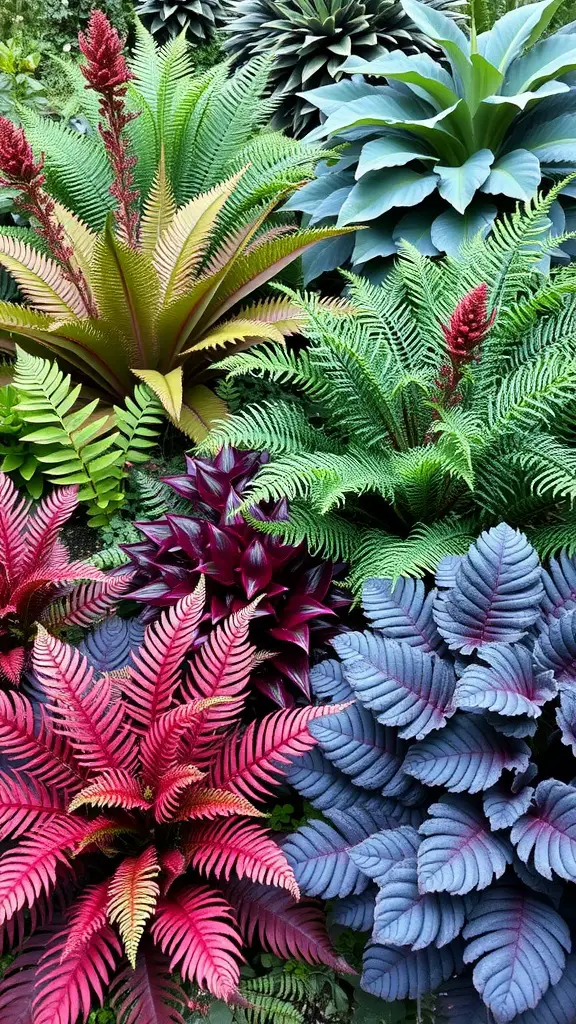
Incorporating bold foliage into your landscaping can bring a vibrant touch to your garden. The image showcases a variety of plants that are not only visually striking but also tend to be unappealing to deer. These plants can deter deer, allowing your garden to flourish without the worry of being nibbled away.
Among the lush greenery, you’ll find an array of textures and colors. The large, architectural leaves provide drama and interest. This unique mix of plants shows that you don’t have to choose between aesthetics and practicality. By selecting unpalatable plants, you create a landscape that is both beautiful and resilient.
Some of these plants are known for their strong scents or bitter tastes, making them less attractive to deer. This means you can enjoy the beauty of your garden without constant maintenance or replanting. As you plan your deer-resistant landscaping, consider these bold foliage options that will stand out while keeping deer at bay.
Colorful Ornamental Grasses
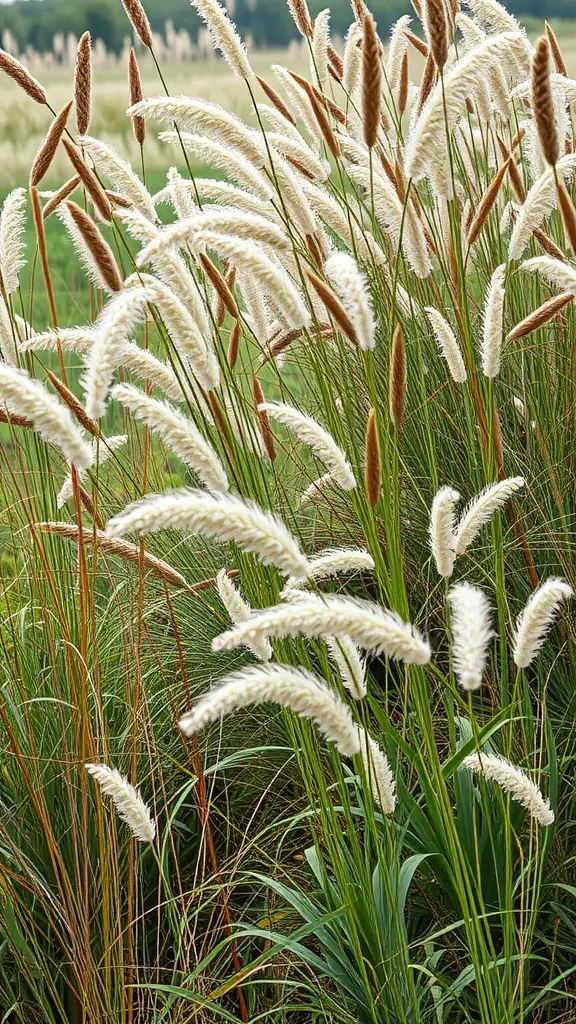
Ornamental grasses can bring a lively touch to your garden while being deer resistant. The image shows a variety of grasses swaying gently, with their feathery white blooms and slender green foliage adding both texture and movement.
These grasses come in many colors and forms. They can range from tall to short, and some even have striking fall colors. For instance, the white feathery plumes look stunning against the green backdrop, creating a soft yet vibrant contrast.
Incorporating these plants in your landscaping is simple. You can use them as borders, fillers, or even as focal points in your garden. They thrive in various conditions and require minimal maintenance. Plus, deer tend to avoid them, making them a smart choice for a thriving landscape.
When planning your garden, consider mixing different types of grasses for varied heights and colors. This not only enhances visual interest but also creates a dynamic environment that draws the eye throughout the seasons.
Scented Herbs that Deter Deer
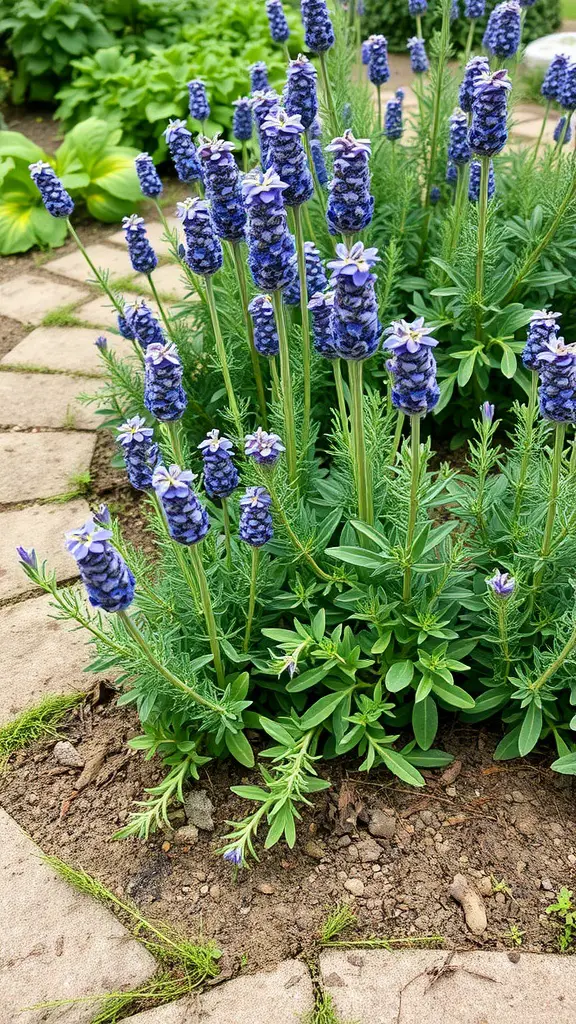
When planning a deer-resistant landscape, scented herbs are a fantastic choice. The image showcases a lovely patch of lavender, a popular herb known for its beautiful purple flowers and soothing aroma. Lavender not only lends a delightful scent to your garden but also acts as a natural repellent for deer.
Deer tend to avoid strong-smelling plants. By integrating herbs like lavender, rosemary, and sage into your garden, you create a fragrant barrier that makes your yard less appealing to these animals. Imagine walking through your garden, surrounded by the soothing scents of these herbs, while knowing you’re also keeping deer at bay.
Not only do these herbs deter deer, but they also attract beneficial pollinators, adding life and color to your garden. Plus, you can use them in your cooking! Incorporating herbs into your landscaping offers both aesthetic and practical benefits.
Rock Gardens with Resilient Plants
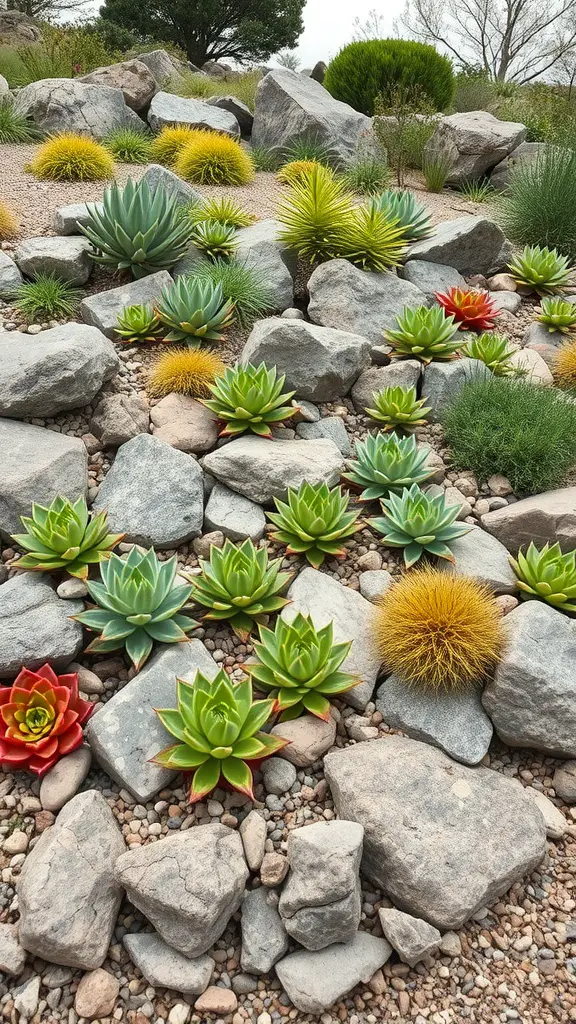
Rock gardens are a delightful way to bring texture and interest to your outdoor space while keeping deer at bay. The image showcases a beautiful arrangement of rocks and resilient plants, illustrating just how effective this type of landscape can be.
The plants featured here, like succulents and ornamental grasses, thrive in rocky settings. They have evolved to withstand harsh conditions, making them less appealing to deer. In fact, many deer-resistant plants have strong scents or tough textures that keep them off the menu.
Creating your own rock garden can be a fun project. Start by selecting a variety of stones that will form the backbone of your design. Then, choose plants that will complement the natural shapes of the rocks. Mixing colors and textures can result in a visually appealing layout.
Remember to include plants like agave and echinocactus, which not only look great but also require minimal maintenance. With proper planning, your rock garden can become a thriving oasis, providing you with a welcoming space that’s free from deer munching on your hard work.
Strategically Placed Fences and Barriers
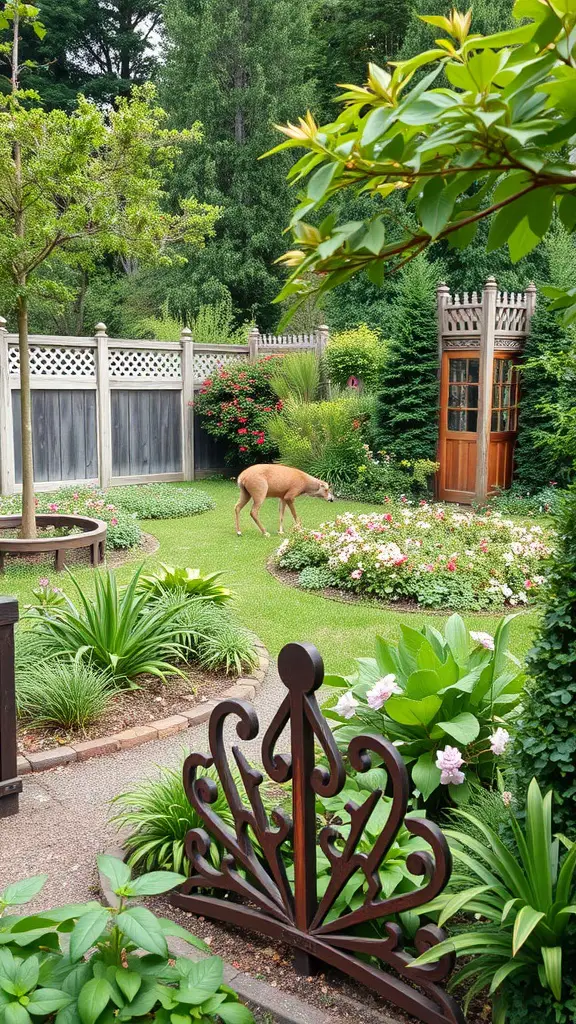
When it comes to keeping deer out of your garden, strategically placed fences and barriers can be quite effective. In the image, you can see a lovely garden adorned with flowers and greenery, while a deer grazes nearby. This highlights the importance of having proper fencing to protect your plants.
Fences don’t have to be dull. You can opt for decorative options that complement your landscaping. Think about using wooden or lattice designs that provide a visual appeal while serving the purpose of keeping deer at bay. Make sure the fence is tall enough; deer are known for their jumping skills!
Beyond traditional fencing, consider barriers like hedges or tall shrubs. These natural deterrents not only enhance your garden’s beauty but also create a sense of privacy. The combination of different types of barriers can make your space less inviting to deer.
While the sight of deer can be charming, they can also wreak havoc on your hard work. By installing fences and barriers wisely, you can enjoy your garden without worrying about uninvited guests munching on your favorite plants.
Native Plant Gardens: A Sustainable Choice
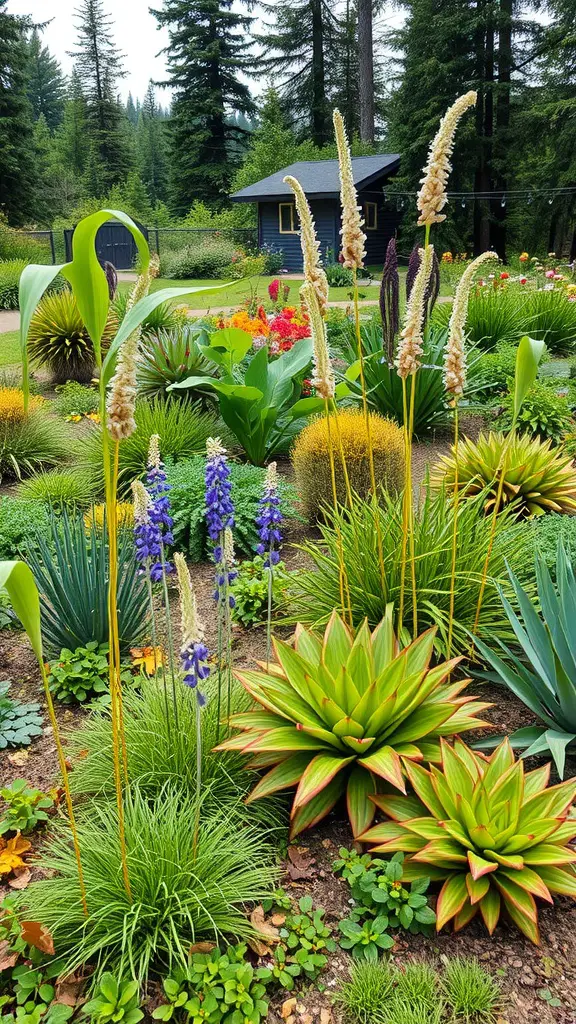
Creating a native plant garden is not just good for you, but it’s also friendly to the environment. This image illustrates a beautiful native plant garden filled with lush greenery and vibrant flowers.
In the foreground, you can spot various plants, including tall flowering stalks and thick, colorful foliage. These native plants are well-suited to the local climate and soil, requiring less water and care than many non-native options.
Native gardens support local wildlife, including butterflies and birds, making your garden a mini-ecosystem. Plus, they’re less appealing to deer, which often avoid these plants. By choosing native species, you encourage biodiversity while minimizing your carbon footprint.
The design of this garden highlights how native plants can add both beauty and functionality to your landscape. Imagine wandering through such a vibrant space, where every plant serves a purpose and contributes to the overall health of the environment.
Container Gardens with Deer-Resistant Varieties
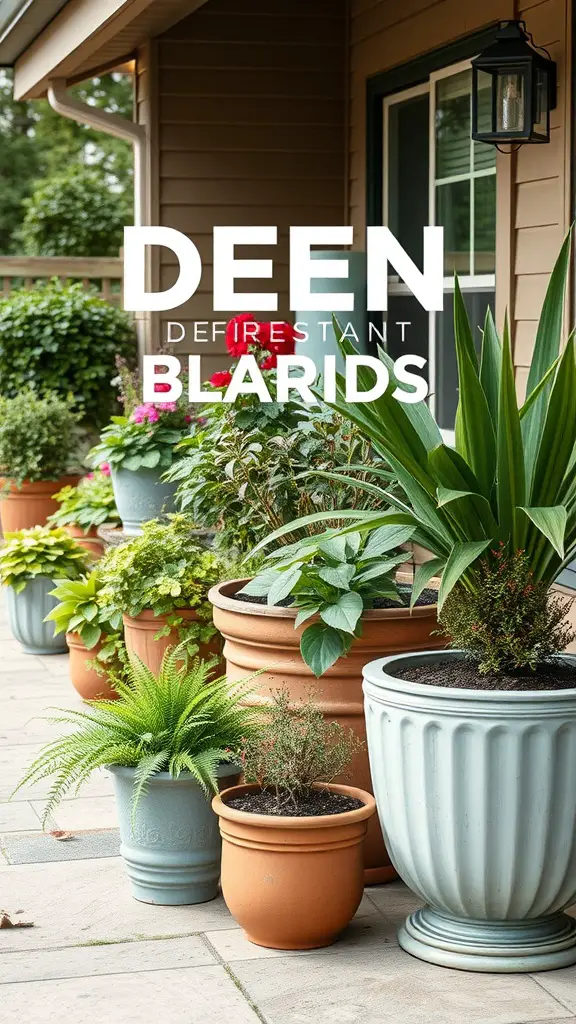
Container gardens are a fun and flexible way to showcase plants that deer typically avoid. These colorful pots add charm to your outdoor space while protecting your plants from hungry wildlife.
In the image, you can see a selection of various container sizes and styles. Each pot holds different types of foliage, creating a vibrant display. Using a mix of materials like ceramic and terracotta not only adds visual interest but also allows for different watering needs.
Some excellent deer-resistant choices for container gardening include lavender, sage, and certain ferns. These plants tend to have strong scents or textures that deer find unappealing. Mixing in some colorful annuals, like marigolds, can also help keep your garden lively and engaging.
Arranging your containers near entryways or patios can enhance your home’s curb appeal. Plus, it’s easy to change out plants seasonally, keeping your garden fresh. Container gardens allow for creativity while keeping your garden protected from deer.
Perennials with Strong Scents
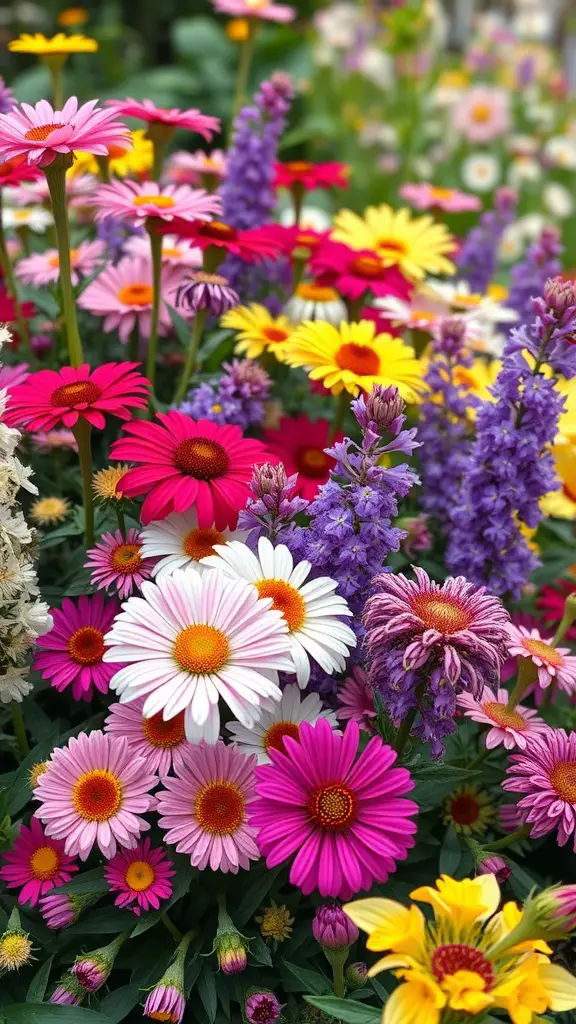
When planning a deer-resistant garden, incorporating perennials with strong scents can be a smart move. Not only do these plants bring beauty and vibrancy to your landscape, but their fragrances also help deter deer and other wildlife. The image showcases a colorful array of flowering perennials, including vibrant daisies and aromatic blooms.
Flowers like lavender, sage, and marigolds are excellent choices. Their strong scents are often off-putting to deer, encouraging them to seek food elsewhere. The bright pinks and yellows in the image emphasize the playful yet effective nature of these plants. Not only do they look cheerful in your garden, but they also serve a purpose.
In addition to their scent, many of these plants attract beneficial pollinators, making your garden a lively spot. Imagine walking through a garden filled with the sweet aroma of herbs and flowers, all while knowing you’re keeping deer at bay. It’s a simple way to enjoy nature while protecting your plants.
Creating a Deer-Resistant Landscape Plan

When planning a deer-resistant landscape, it’s important to visualize the layout. The image shows a sketch of a garden path surrounded by various plants, trees, and flowers. Each element plays a role in creating a space that is not only beautiful but also less appealing to deer.
Start by choosing plants that deer tend to avoid. In the illustration, you can see a mix of shrubs and flowering plants. These can serve as barriers while still offering color and texture to your garden. Look for species that are known for their strong scents or tough leaves.
The pathway in the picture suggests a way to navigate through your garden, making it easy to enjoy the scenery. Incorporating hardscape elements like stones or gravel can deter deer from wandering too close to your plants. This combination of soft and hard landscaping creates balance and functionality.
Consider adding taller plants or hedges in strategic spots. These can act as natural screens, providing shelter for smaller plants further down the path. This layered approach not only enhances visual interest but also reinforces your deer resistance strategy.
Seasonal Color with Deer-Resistant Annuals
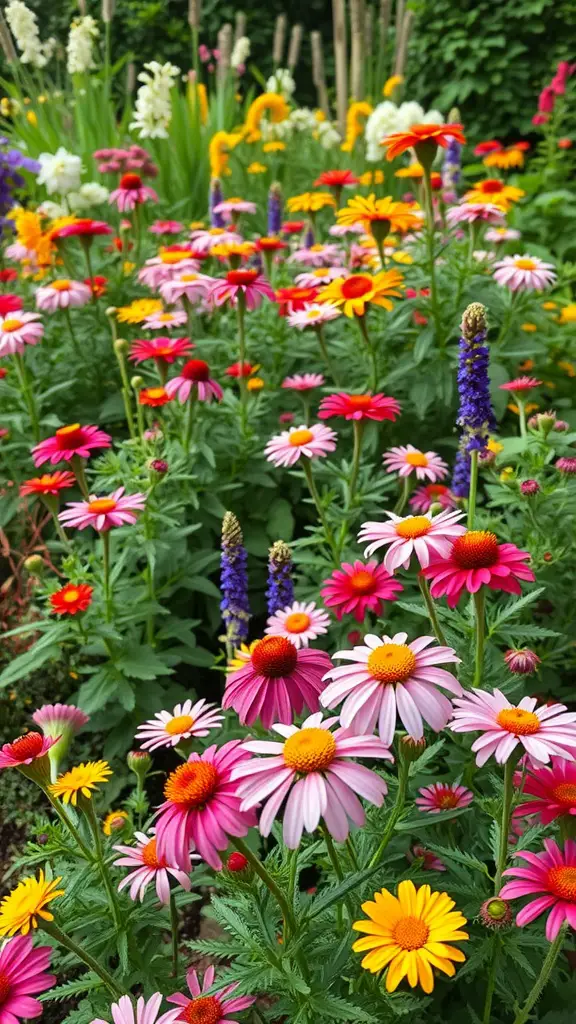
Incorporating deer-resistant annuals into your garden not only adds a splash of color but also keeps those pesky deer at bay. The image above showcases a vibrant mix of annuals, featuring cheerful daisies in shades of pink, yellow, and orange alongside purple spikes. These colorful flowers can transform any garden into a lively space, perfect for enjoying throughout the seasons.
Consider planting varieties like zinnias, marigolds, and petunias, which are not only deer-resistant but also easy to care for. When selecting your annuals, think about mixing heights and colors for a dynamic look. This creates a visually appealing garden that will draw the eye, even from a distance. Plus, many of these flowers attract pollinators, adding even more life to your outdoor area.
To keep your garden flourishing, ensure you provide adequate water and sunlight. Regular deadheading helps promote new blooms, making sure your garden stays colorful all season long. Remember, while no plant is completely deer-proof, these selections often deter them, giving you a beautiful landscape without the worry of damage. Happy planting!
Vertical Gardens with Climbing Species
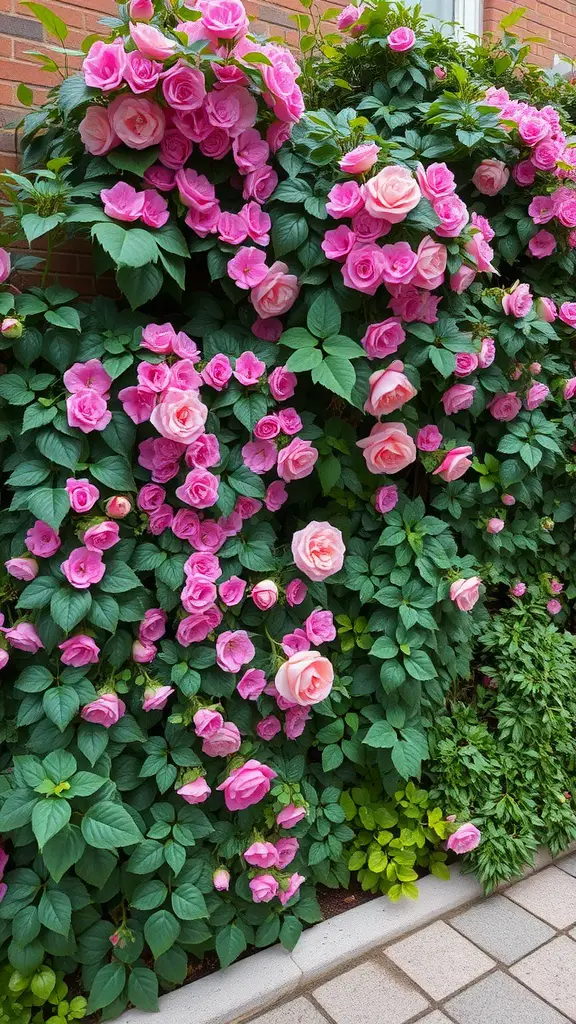
Vertical gardens are a smart way to use limited space while adding beauty to your yard. In the image, vibrant pink roses climb up a supporting structure, making a stunning display against the backdrop of a brick wall. This colorful arrangement not only enhances the aesthetic appeal of the area but also serves as a practical solution for gardens that may face deer challenges.
When selecting climbing species for your vertical garden, it’s essential to choose plants that are known to be deer resistant. Many climbing roses, for instance, are not favored by deer due to their thorny stems. Other great options include clematis and certain types of vines that can thrive in your climate.
Incorporating colorful climbing plants can create a lush, inviting space. They can also provide privacy or act as a natural screen in your garden. Be sure to pair them with hardy ground covers like creeping thyme, which can tolerate deer and complement your climbing plants beautifully.
A vertical garden is not just about looks; it also encourages biodiversity. Birds and beneficial insects are often attracted to these vibrant spaces, adding life to your garden. So, if you’re looking to add some charm while keeping your garden deer-free, a vertical garden with climbing species is a delightful choice.

